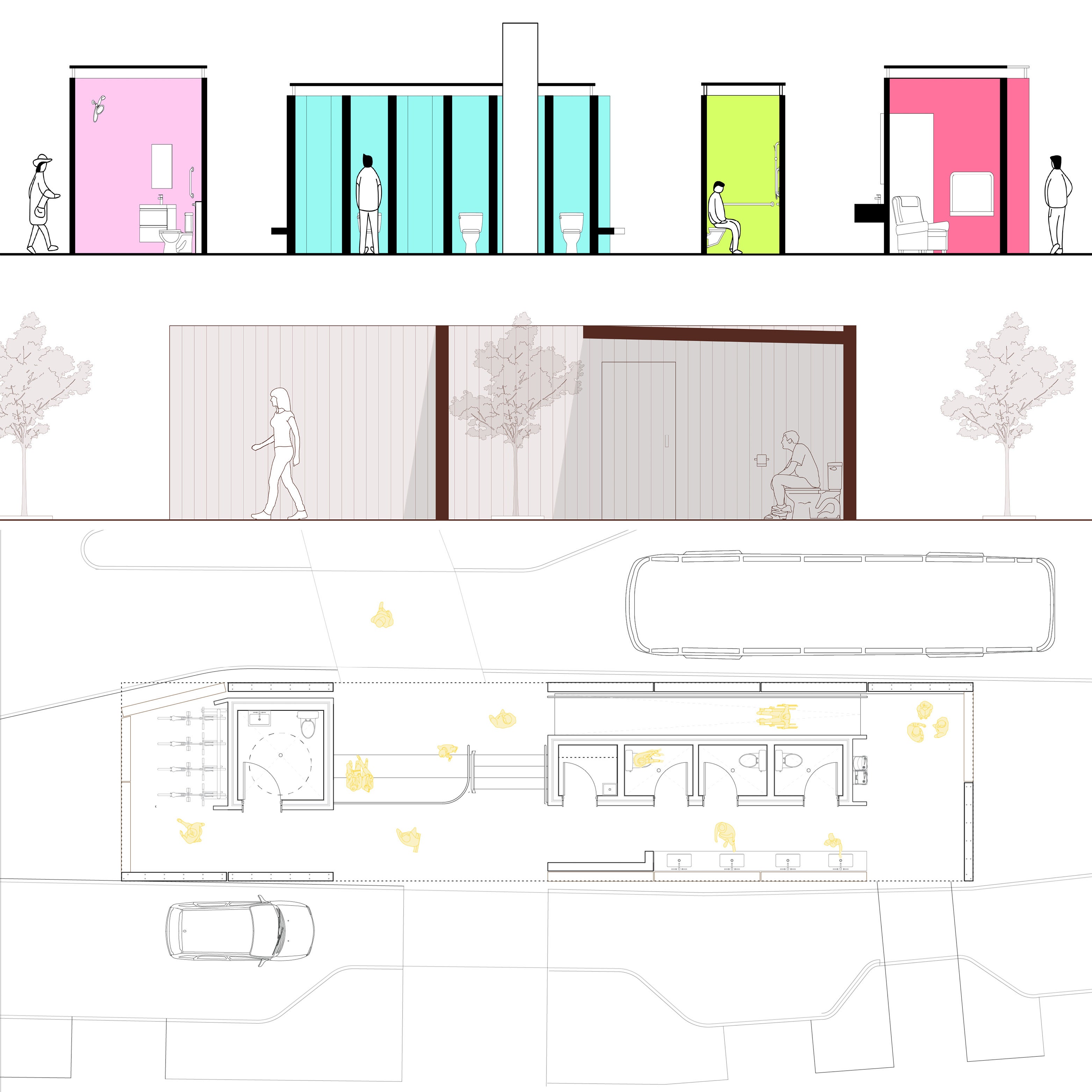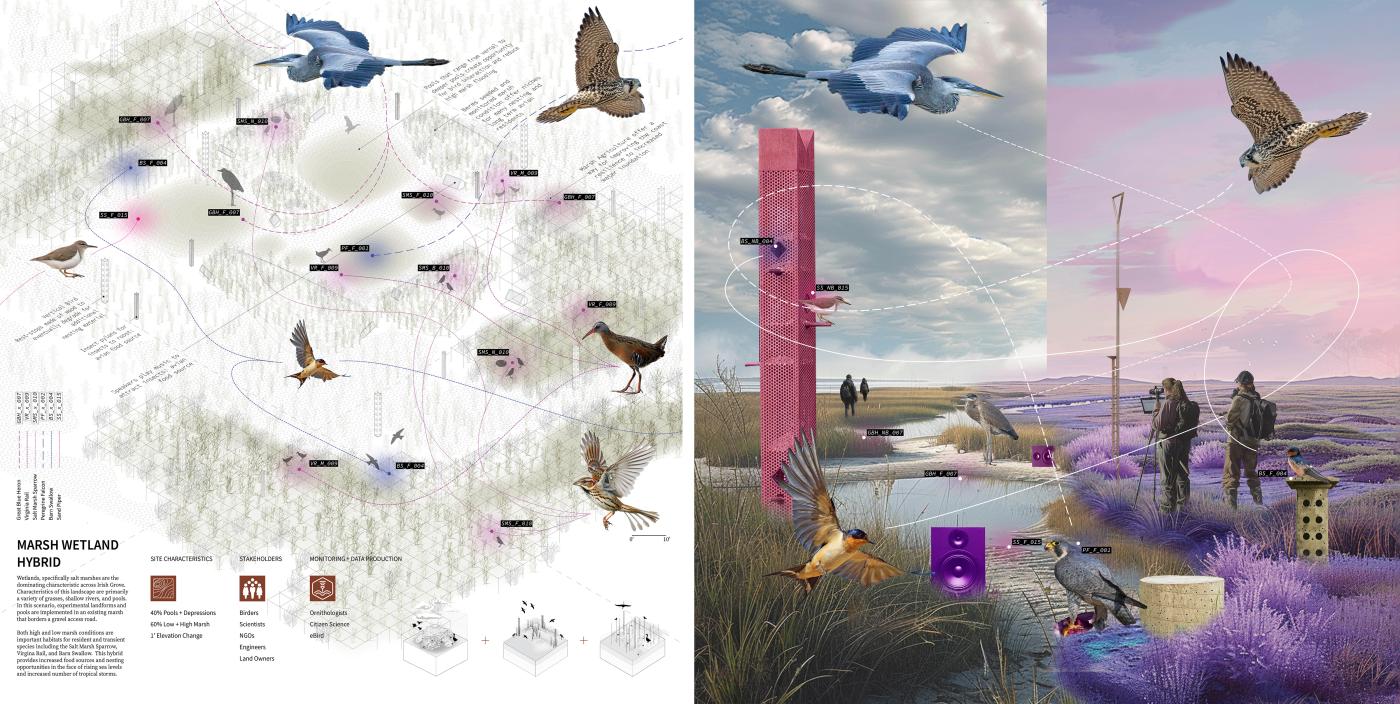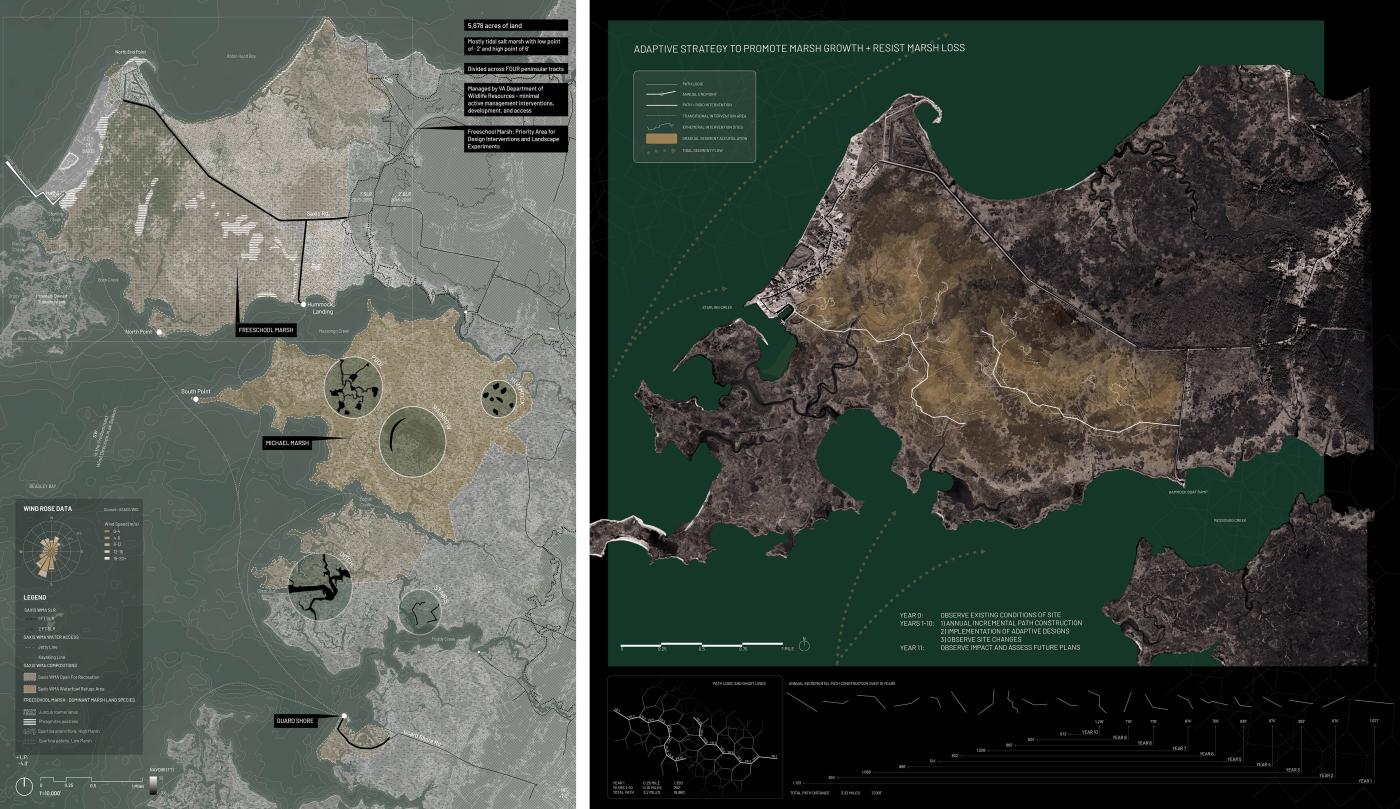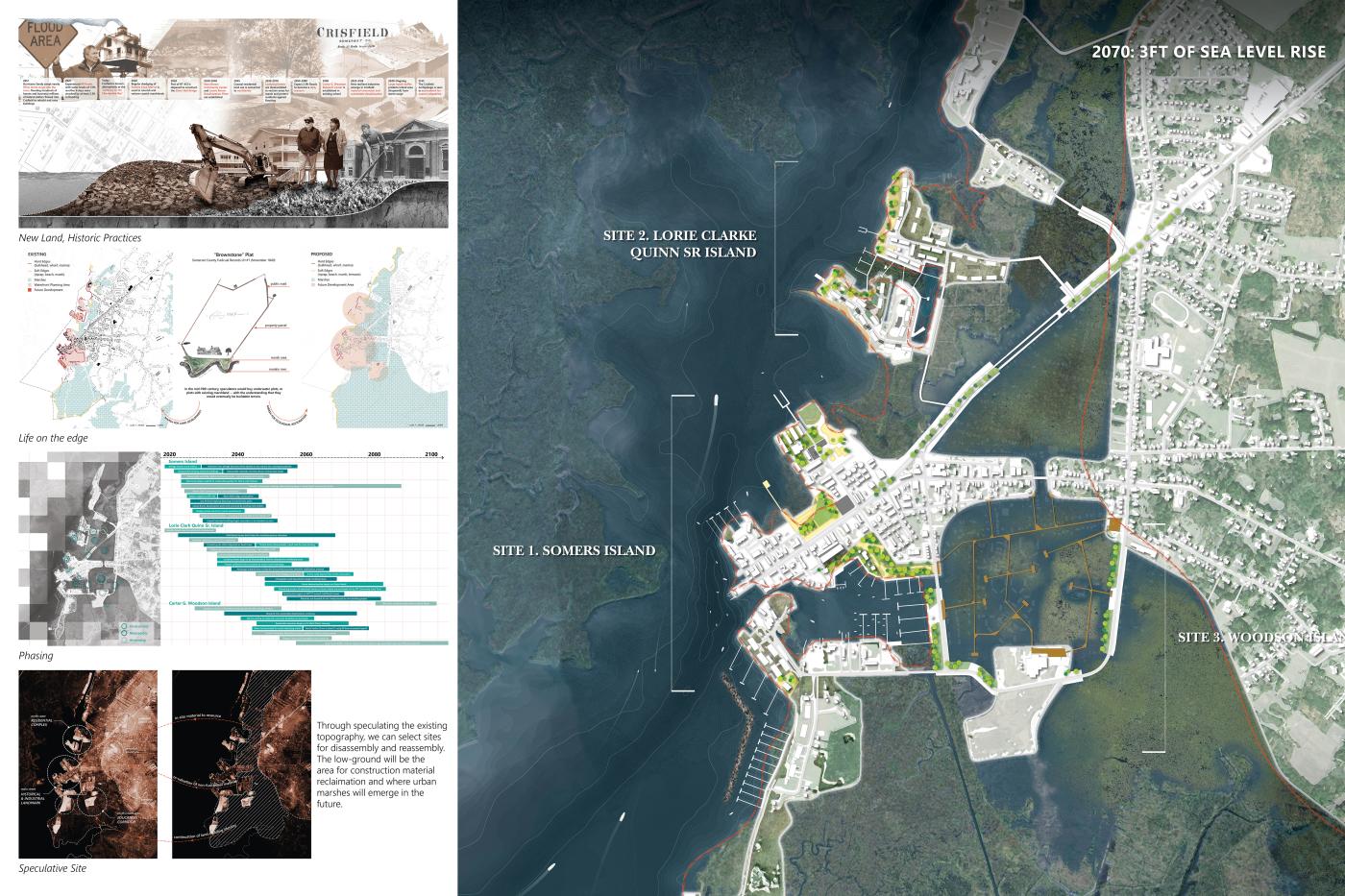
Landscape Architecture Students Win Maryland ASLA's Climate Action Plan Challenge
Three graduate student teams from UVA School of Architecture’s Master of Landscape Architecture program were honored for their visionary contributions to the inaugural Chesapeake Bay Watershed Climate Action Plan Challenge, organized by the Maryland Chapter of the American Society of Landscape Architects (ASLA). Their projects, created in the spring 2024 studio course "Prototyping the Bay: Landscapes as Medium" under the advisorship of associate professor Brad Cantrell and lecturer Sean Kois, explored innovative strategies for addressing climate resilience in the Chesapeake Bay Watershed. Through experimental and adaptive design interventions, these students tackled the pressing challenges of sea level rise, ecosystem degradation, and community adaptation, advancing ASLA’s Climate Action Plan goals.
The teams will receive $500 and an opportunity to display their work at the 2024 ASLA Conference in Washington D.C. later this fall.
SKYSCAPING: COLLABORATIVE EXPERIMENTATIONS FOR AVIAN ECOLOGICAL FUTURES
SAMANTHA HUBBARD (MLA '25), MAYA NEAL (MLA + M.ARCH '24), PAIGE WERMAN (MLA + MUEP '25)

Skyscaping expands upon the dynamic ecosystem of the Chesapeake Bay, highlighting its multifaceted influence shaped by environmental, ecological, and sociocultural factors. By emphasizing the Bay's crucial role in sustaining diverse migratory species, the project aims to challenge traditional conservation methods by actively engaging with landscape systems and evolution. With a particular focus on the Irish Grove Wildlife Sanctuary, Skyscaping explores a landscape laboratory methodology aimed at deepening understanding of bird migration and ecosystem dynamics at the scale of the Chesapeake Bay, the Atlantic Flyway, and, ultimately, the globe.
By shifting the Irish Grove Wildlife Sanctuary into a public "land lab," stakeholders can experiment with landscape prototypes and observe avian behavior to explore ecological evolution possibilities and plan for post-anthropogenic landscapes. The project seeks to expand bird stopovers and improve monitoring practices through unconventional design techniques and experimental interventions, fostering a dynamic and interactive approach to ecological surveillance and management. This approach acknowledges the interconnectedness between humans and non-humans, prioritizing birds as agents of ecological evolution and advocating for a holistic understanding of landscape dynamics.
EMERGENT MARSH LAND
CONNIE LIOU (MLA '25), MONICA NICHTA (MLA '25), MADHURA VAZE (MLA '24)

Coastal wetlands around the world are facing simultaneous pressures from numerous threats. The Emergent Marsh Land project at Saxis Wildlife Management Area, located on the eastern shore of Accomack County, Virginia, is an adaptive ecological infrastructure designed to respond to marsh migration and the pressures of sea level rise, saltwater inundation, erosion, and habitat loss. The proposal centers the marsh as the primary character and engages with the changing landscape through a series of experimental design interventions intended to promote the endurance of the saltmarsh.
The project presents three main intervention types as experimental strategies designed to catch and hold sediment and debris in various ways: a rigid gabion wall, transitional upright stake configurations, and ephemeral folding and weaving with phragmites. Each intervention explores how sediment and debris accumulate and break down, forming a new layer of elevated soil that simulates the natural processes of marsh growth. These interventions, structured strategically and implemented flexibly over a 12-year period, provide an opportunity to observe the landscape’s response and monitor subsequent ecological shifts.
By deploying these interventions dynamically and conscientiously, the Emergent Marsh Land team hypothesizes that subtle changes in elevation will elicit a vibrant response from this sensitive ecosystem. This approach will enable new micro-ecologies to emerge, positioning Saxis Wildlife Management Area as a place where people can experience and care for marshes as part of everyday life.
COASTAL ASSEMBLAGES: ANCHORING MEMORIES AND MATERIALS IN THE CITY OF CRISFIELD
JOYCE FONG (MLA '24), JULIA MACNELLY (MLA '25), LYSETTE VELÁZQUEZ (MLA '24)

Coastal Assemblages advoacates for a transformative approach in turning Crisfield into a flood-adaptive landscape, leveraging its cultural heritage to mitigate environmental risks. Despite facing fragmentation due to rising sea levels, the project aims to maintain unity and promote wealth-building and generational planning, even as contiguous land is fragmented into islands.
Crisfield, a small coastal city of 2,500 residents, stands just 3 feet above sea level on the Chesapeake Bay. The city was built on oysters: in the mid-19th century, the oyster industry attracted a boom of industry and residents, and discarded oyster shells became constructed land. With sea levels predicted to rise 3–5 feet by 2100, Crisfield faces the threat of becoming underwater. Inspired by Crisfield’s historic land-building practices, our project reclaims inundated material to use as constructed soil through three key phases: disassembly, reassembly, and grounding. Guided by speculative digital elevation models, this project envisions Crisfield as an archipelago with a large marsh buffering the remaining contiguous land.
“Disassembly” involves dismantling structures to reclaim materials and facilitating water infiltration into soil through depaving to mitigate flooding. “Reassembly” repurposes reclaimed materials to preserve original architectural details in new configurations. Woven throughout all phases is “Grounding”: bridging both tangible and material cultural heritage through the preservation of traditions and the creation of new industries and lifeways. We demonstrate these strategies across three proposed sites: Somers Island, Quinn Island, and Carter G. Woodson Island. The process of building ground and uncovering marsh allows the landscape to become a main character in Crisfield’s future.


